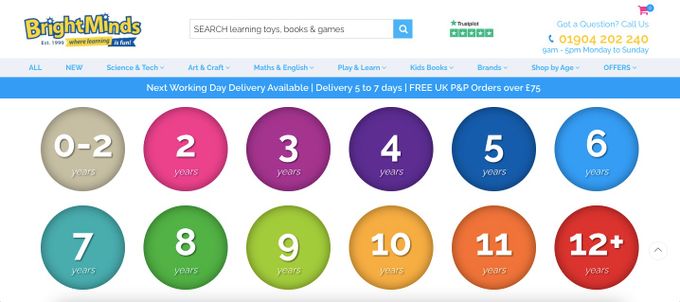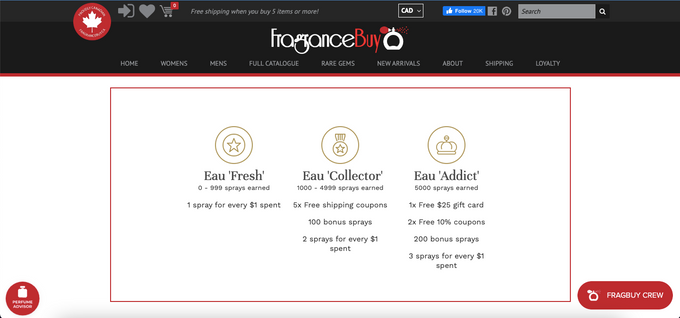3 Customer Segmentation Strategies to Grow Your eCommerce Business
Learn how customer segmentation can help eCommerce businesses increase sales and improve customer satisfaction. Discover actionable tips and real examples.
Published October 15, 2024

According to a Redpoint Global study, 64% of consumers prefer purchasing a product from a brand that knows them, and 34% say they would spend more on that brand. This means that if you implement customer segmentation strategies carefully, it can help you grow your eCommerce business. By dividing your customers into demographic, behavioral, or psychographic segmentation, you'll have a deeper understanding of your customers' preferences and behaviors, which in turn can lead to increased sales and customer satisfaction.
» Read more about visual merchandising
What Is Customer Segmentation?
Customer segmentation is the process of dividing your customers into groups based on shared characteristics, such as demographics, behaviors, and psychographics.
This way, you can create audience segments and use tailored strategies that are more effective at reaching and engaging your target audience.
The process typically involves several steps:
- Collecting customer data through surveys, tracking website behavior and purchase history, and analyzing customer reviews.
- Performing a statistical data analysis through machine learning or AI to identify distinct customer groups and create unique segments.
- Creating targeted marketing strategies with product offerings designed to appeal to each segment's unique interests and needs.
» Find out effective ways eCommerce personalization helps your business
1. Demographic Segmentation
Demographic segmentation groups customers based on similar demographic factors such as age, gender, income, location, and more.
When using this strategy, you can start by collecting data through customer surveys and website analytics like Google Analytics or your Shopify Dashboard. This can help identify specific trends and preferences.
Depending on the segment, you should consider different aspects to improve your approach:
- Age: Different age groups have different purchasing habits and needs.
- Gender: You can use personalization to create targeted, gender-specific marketing campaigns based on need and desire.
- Income: Matching your product offerings to your target audience's income bracket can help improve sales. For instance, if your customers are in a higher bracket, you might offer luxury products and emphasize product exclusivity and quality.
- Location: You can create campaigns that cater to customers' unique needs in different regions. For example, an eCommerce store selling winter jackets can create targeted marketing campaigns for customers living in cold areas.
Bright Minds: Age is Not Just a Number
Bright Minds, a toys and books store, leverages demographic segmentation visually based on different age groups. Since the majority of the products are for children, dividing them up into age-appropriate groups helps for more seamless browsing. This can boost customer confidence and satisfaction with the store, which can improve sales.
» Make sure you understand the difference between customer personalization and segmentation
2. Behavioral Segmentation
Behavioral segmentation allows you to create targeted campaigns and personalized experiences by grouping customers based on patterns such as their purchasing habits, browsing behavior, and customer loyalty.
Some ways to optimize this strategy include:
- Analyzing purchase history This can help identify which products or categories are popular, which customers make frequent purchases, and which customers have a high average order value.
- Tracking customer purchase journey Customer browsing behavior can indicate which products or categories customers are interested in but have not purchased. This data can be used to create retargeting campaigns.
- Measuring customer loyalty You can track how frequently customers make purchases, how long they've shopped with you, and their general engagement with loyalty programs. This can also help you identify and tackle hiccups that bust brand loyalty.
Fragrance Buy: Smells Like Loyalty
Fragrance Buy, a beauty and cosmetics store, offers an extensive loyalty program. This includes:
- Earning points, which they call "sprays".
- Multiple integrated ways of earning points through referrals and social media.
- An array of point redemption options, from free shipping to discounts.
Social media inclusion can increase reach and customer engagement across multiple channels, which can translate into more sales and customer loyalty.
The business's strategy is effective since businesses that leverage loyalty and rewards programs tend to generate revenues around 2.5 times faster than those that don't. Plus, VIP tiers further instill a sense of reward for customers, as the tier doesn't downgrade once you've achieved it.
» Learn about the convergence between AI, eCommerce, and an optimized experience
3. Psychographic Segmentation
Psychographic segmentation divides customers into groups based on their personality traits, values, interests, and lifestyles.
This strategy can help you understand your customers' intent and preferences even better. Then you can create more effective marketing campaigns and improve your overall site search experience.
Here are some tips to consider with this method:
- Conduct surveys and focus groups to gain insights into customers' personality traits, values, and interests.
- Analyze social media data to understand customers' lifestyles and interests.
- Create customer personas based on psychographic characteristics to better target marketing efforts.
Princess Polly: Live That Influencer Lifestyle
Princess Polly, an online fashion business, curates clothing and accessories that lean into lifestyle preferences, particularly those of online influencers.
The store strives to deliver "key seasonal trends to fashion-obsessed Millennials", so they tap into this market's psychology by letting their customers shop according to influencers. Customers can easily browse products recommended by their favorite influencers, allowing them to effortlessly emulate the lifestyle they want. This then also doubles as social proof.
The Fast Way to Grow Your eCommerce Business
In eCommerce, customer segmentation allows you to understand and engage with your customers more meaningfully. By identifying commonalities among different groups and creating targeted marketing campaigns that speak directly to their interests, you can improve sales and customer satisfaction.
Customer segmentation can also highlight your attention to consumer needs and preferences, which can improve long-lasting customer relationships.
» Need to optimize? See these top eCommerce apps to optimize customer experience








